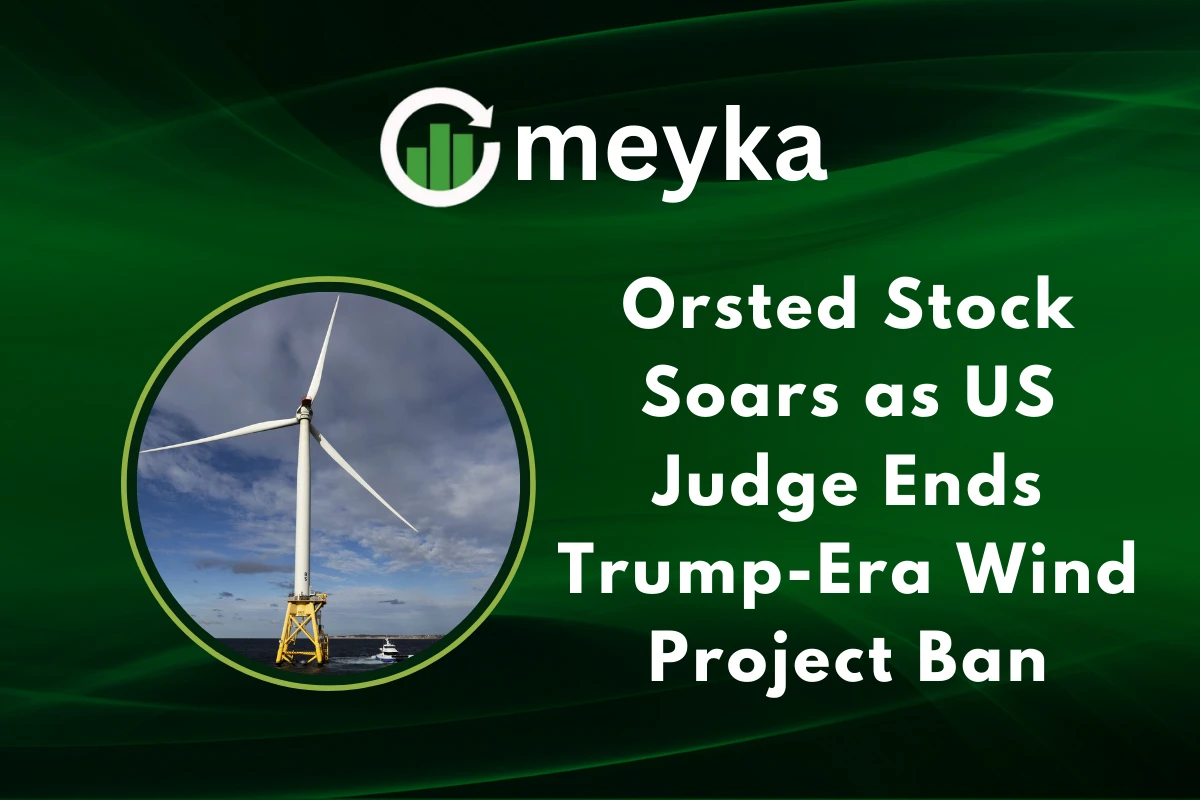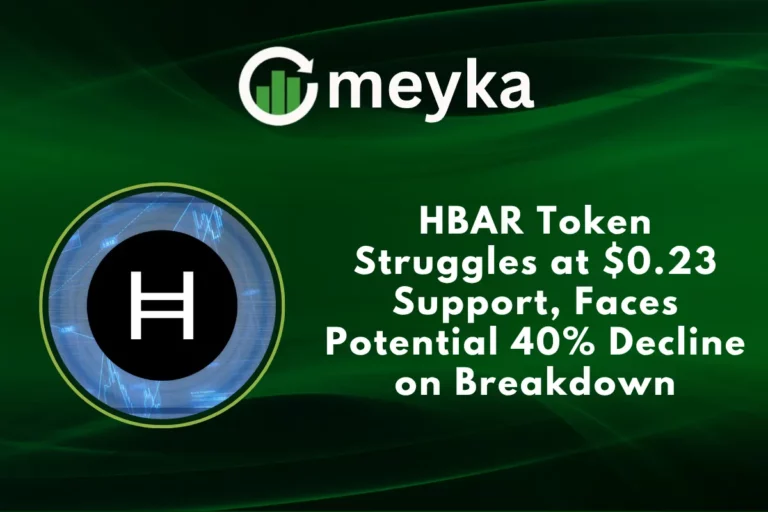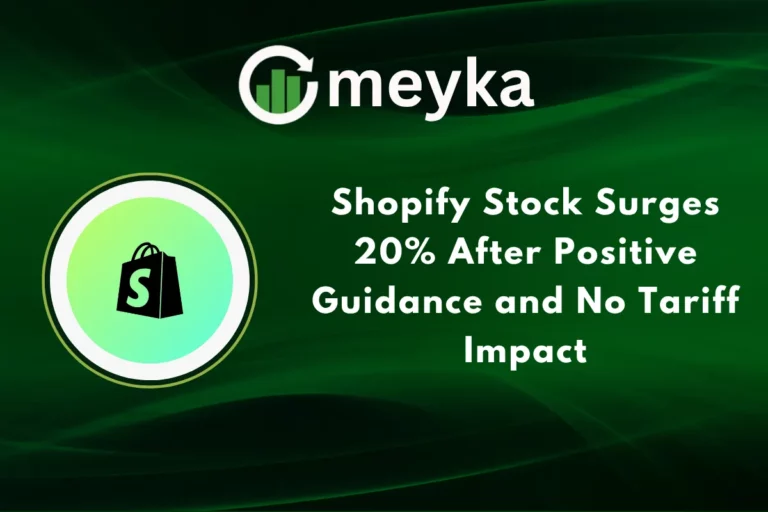Orested Stock Soars as US Judge Ends Trump-Era Wind Project Ban
A U.S. federal judge on September 23 issued a temporary ruling that allows Orsted to resume work on the nearly finished Revolution Wind project. The decision lifted a Trump-era stop-work order that had frozen installation at sea. Markets moved fast, and Orested Stock surged on hopes that the project will restart and losses will stop.
The ruling matters because the project was already deep into construction, and the pause had cost Orsted millions each day.
Why did Orested Stock jump after the ruling? Investors read the ruling as a path to restart revenue and avoid further cost escalation for the Revolution Wind project.
Why Orested Stock Soared After the Ruling
The judge’s injunction blocks enforcement of the work-stop order while the legal case continues. That gave Orsted near-term relief. Shares climbed sharply on the news, at one point rising about 12 percent at the open, before settling to a smaller gain as traders digested risk.
The move reflected both relief and caution, since the legal fight could continue and the White House might appeal.
Short-term market mechanics
Traders priced in a quicker path to completing turbines and cables. Analysts said the ruling reduced the immediate risk of a credit downgrade. Yet they warned of ongoing political risk in the U.S.
Is this a permanent fix? No. The injunction is temporary, and further legal or regulatory action could still derail progress.
The Significance of the Revolution Wind Project for Orested Stock
Revolution Wind sits roughly 15 miles off Rhode Island. The project was about 80 percent complete when the work order hit. Orsted and its partner had already spent or committed roughly $5 billion to the development, and the companies warned of more than $1 billion in potential breakaway costs if the project were canceled.
Restarting work reduces the chance of costly delays and preserves much of the project’s value.
Economic and energy impact
The project will add significant offshore capacity to New England’s grid. It also supports local jobs during the final installation phase, and it feeds into U.S. renewable targets and offshore wind supply chains.
How quickly can work resume? Orsted said it would resume work “as soon as possible,” though vessel availability and logistics remain constraints.
Orested Stock in the Global Renewable Energy Market
Orsted is a global leader in offshore wind. The company competes with European and U.S. developers and utilities as nations accelerate the green transition. A U.S. restart would strengthen Orsted’s North American profile. It would also reassure investors who saw political risk as a major overhang on Orested Stock.
Comparative position
Orsted’s global scale gives it advantages in procurement and project execution. Still, the firm faces higher financing costs and supply chain pressures that affect margins and cash flow. The U.S. legal episode exposed those vulnerabilities, but it also showed the value of a near-complete asset.
Does this change global clean energy momentum? It is a local win, but it signals to markets that major projects can survive legal and political shocks.
Orested Stock Investor Confidence and Market Reactions
Markets reacted in real time to the ruling, with headlines and social feeds amplifying sentiment. The trading jump was widely covered across financial outlets, and investors used the news to reassess Orsted’s risk profile. Public commentary accelerated the move. See the market pulse here:
Volatility and volume
The stock spike reflected both headline-driven buying and algorithmic responses. Volume rose as traders rebalanced positions that had hedged against project cancellation.
Should investors buy the dip? Short-term traders may respond to momentum, while long-term holders should weigh execution risk and political uncertainty.
How Analysts View Orested Stock’s Future
Industry and credit analysts welcomed the decision to ease immediate liquidity pressure. They noted the company was losing about $2 million a day while work was stopped, and that the capital injection and shareholder support were crucial to avoiding a downgrade.
Analysts cautioned that a policy reversal at the federal level or an appeal could reopen risk. In evaluating the company, many investors now combine traditional equity models with sector intelligence and AI stock research to track supply chain and project timelines more closely.
Credit and capital
Orsted had secured a near $9.4 billion capital injection to shore up liquidity. The ruling reduces immediate pressures on that package, but the long runway still depends on timely project completion.
Are ratings safe now? The ruling reduces downgrade risk in the short term, but ratings agencies will watch legal outcomes and cash burn closely.
Orested Stock Policy Shifts and Their Role in Green Energy Growth
The reversal shows how legal and policy decisions shape renewable pipelines. Government actions can stop or restart major energy builds almost overnight. For developers and investors, clear regulatory frameworks matter as much as turbines.
Analysts are now layering policy scenarios into models, often using new data sets and AI stock analysis to simulate policy impacts on project cash flows.
Will policy remain stable? Policy can change, and projects in politically sensitive zones remain exposed to shifts in administration priorities.
What This Means for Long-Term Investors in Orested Stock
For long-term investors, the ruling restores a path to value recovery for Revolution Wind. If Orsted completes the project without further interruption, the company will start converting committed capital into operating assets and revenue.
Still, investors should weigh execution risk, costs of delays, and broader market factors such as interest rates and supply chain inflation.
Some investors will add Orsted as a play on offshore capacity growth, while others will wait for sustained operational progress before increasing exposure to Orsted Stock. AI stock models that incorporate infrastructure timelines can help with sizing exposure.
Is this a buy for long-term portfolios? It depends on risk tolerance, time horizon, and belief in the continued push for offshore wind in the U.S.
Broader Implications for Renewable Energy
The episode underscores how U.S. offshore wind is still evolving. If Revolution Wind returns to operation, it could renew momentum for other projects. That would support jobs, local supply chains, and climate targets. It would also send a message to investors about the resilience of major renewable builds when legal obstacles are resolved.
The sector will still face policy friction, but the ruling is a boost for project pipelines and for market confidence in Orested Stock.
Conclusion
The judge’s temporary lift of the stop-work order gives Orsted a chance to finish a near-complete offshore wind farm. Markets cheered, and Orested Stock rallied on the possibility that losses will stop and value can be preserved.
Execution and legal outcomes will decide whether this rally lasts. For now, the ruling offers a clear path forward for Revolution Wind and a sign that large renewable projects can recover when courts, capital, and logistics align.
FAQ’S
Orested Stock surged because a U.S. judge lifted a Trump-era ban on the Revolution Wind project, clearing the path for work to resume and revenue to flow again.
Revolution Wind is an offshore wind farm near Rhode Island. Its completion strengthens U.S. renewable capacity and boosts investor confidence in Orested Stock.
Reports showed Orested Stock gained as much as 12% in early trading before settling, reflecting both optimism and caution from investors.
The ruling is temporary, so appeals, policy changes, and supply chain delays could still impact Orested Stock in the coming months.
The decision signals stronger momentum for offshore wind, showing that despite legal hurdles, projects like Revolution Wind can progress, which supports Orested Stock.
Disclaimer
This content is for informational purposes only and is not financial advice. Always conduct your research.






